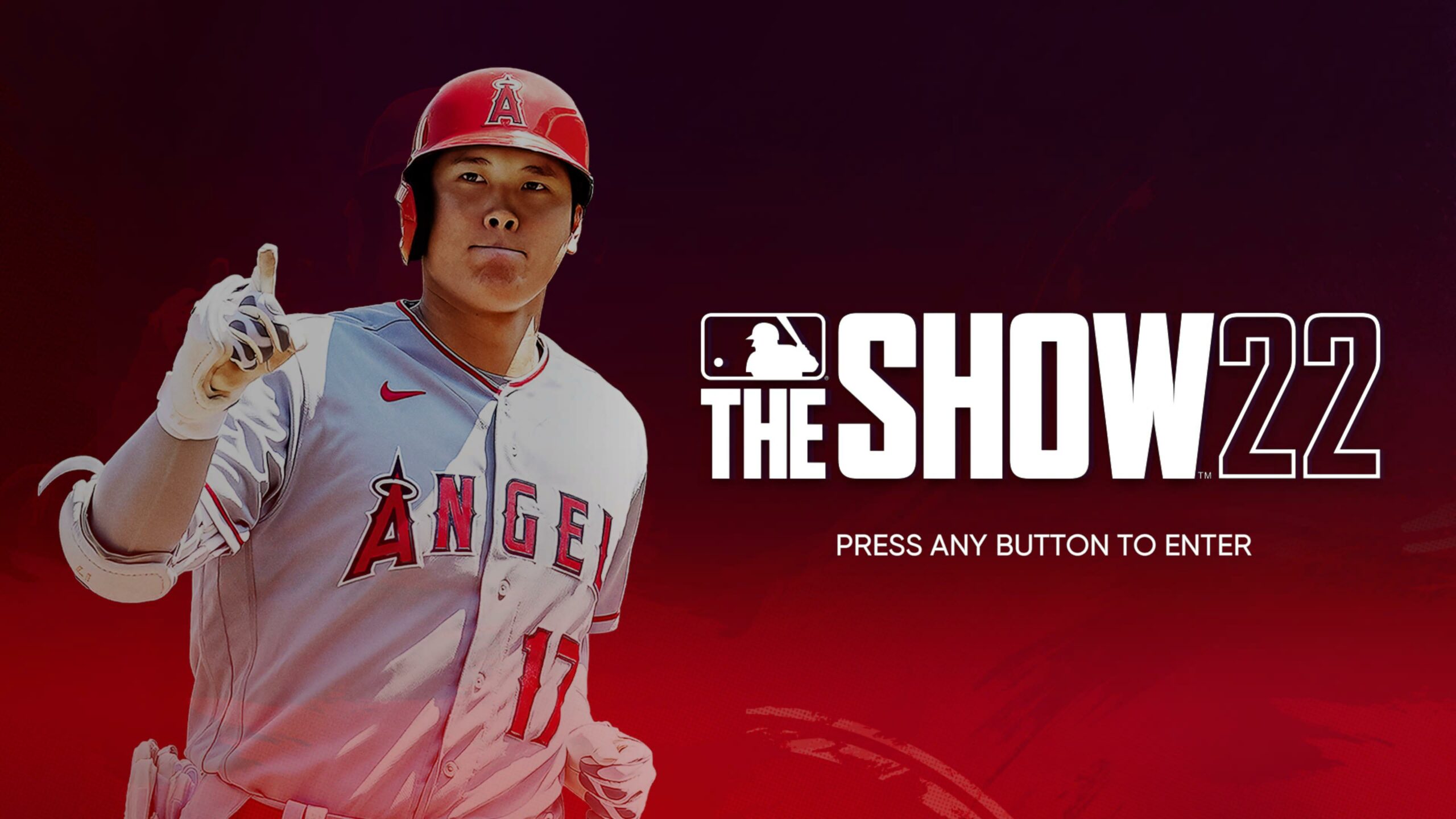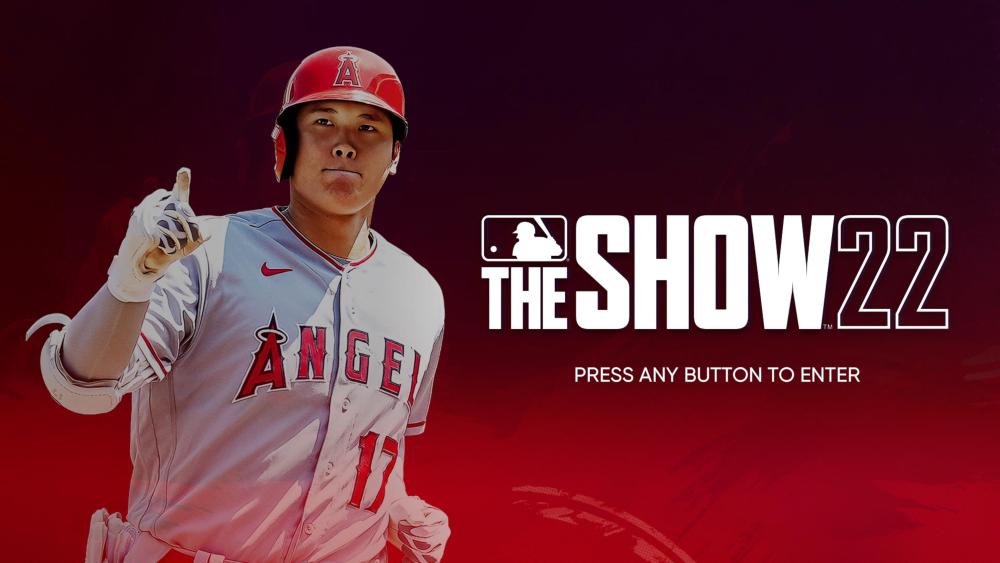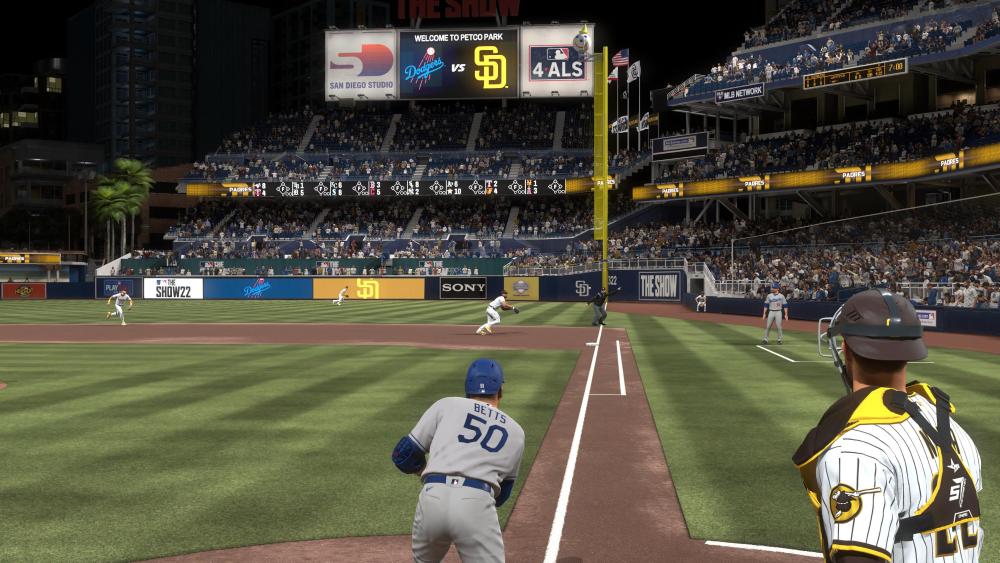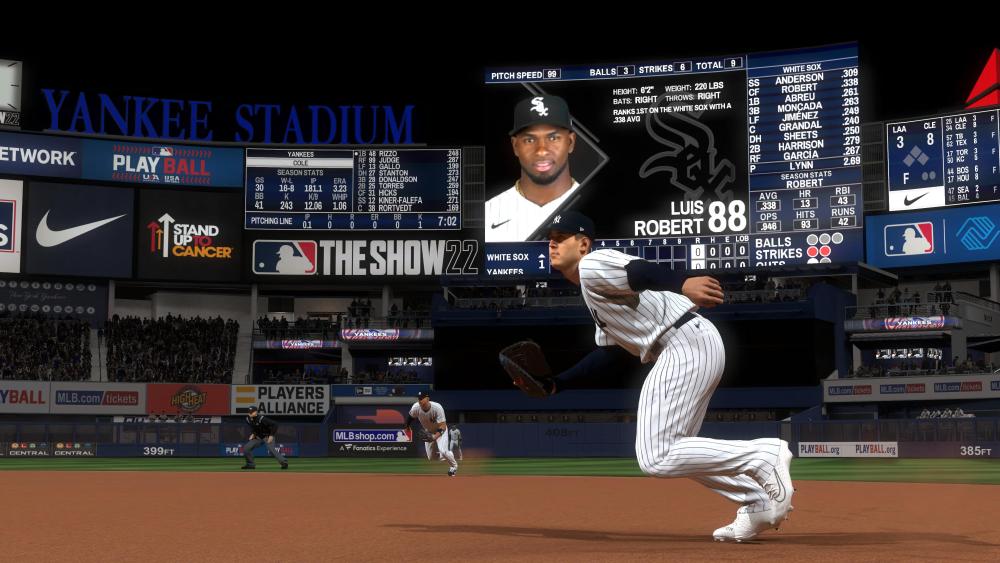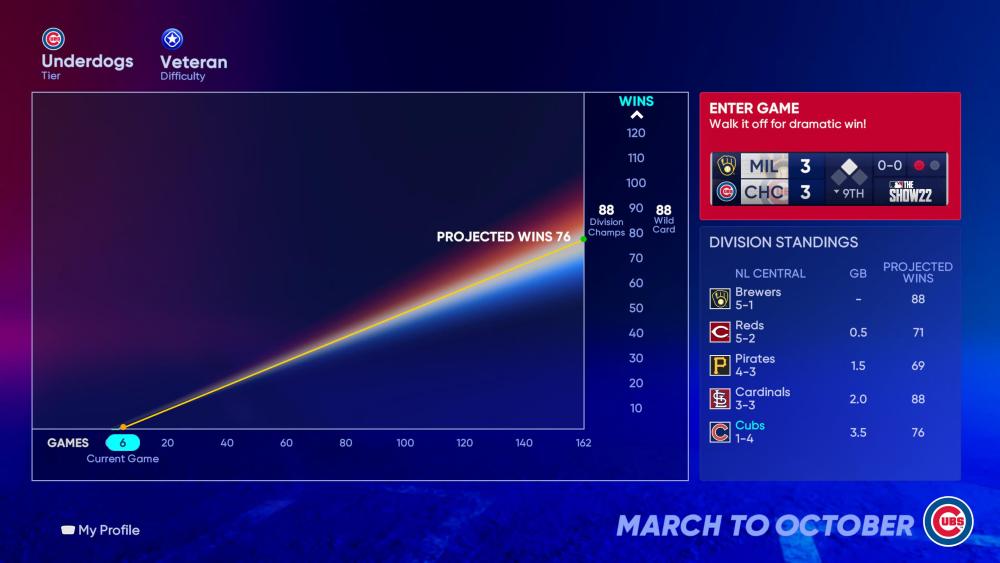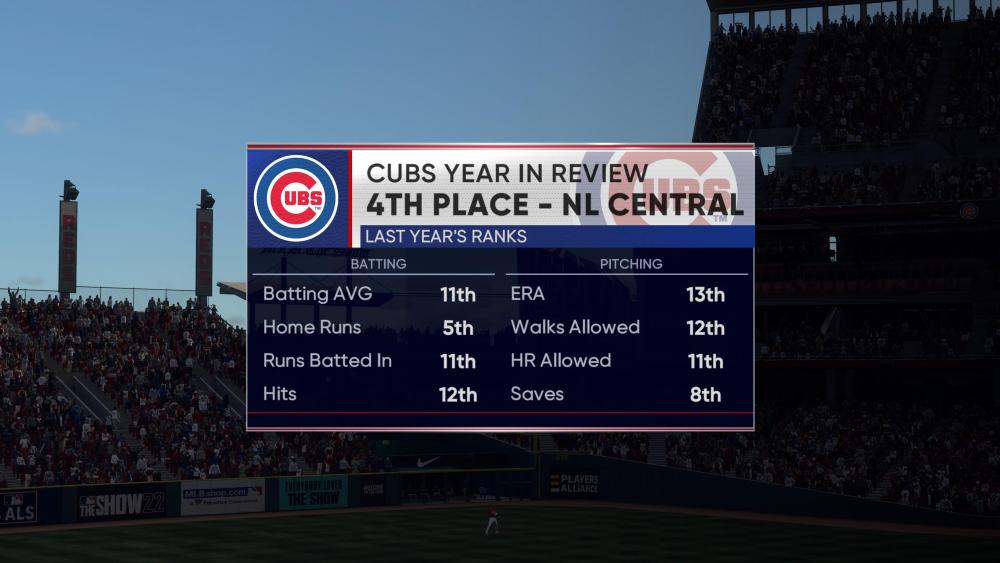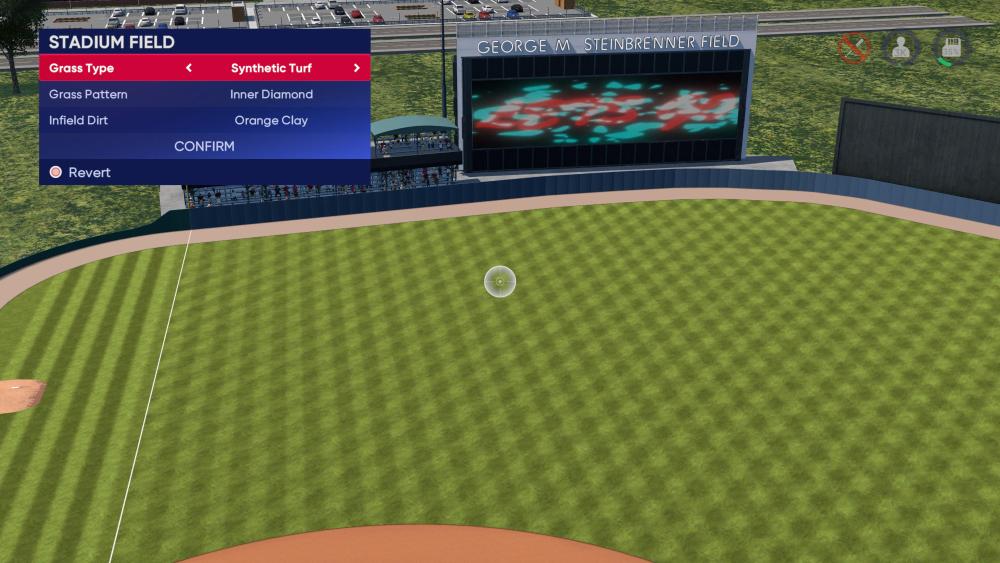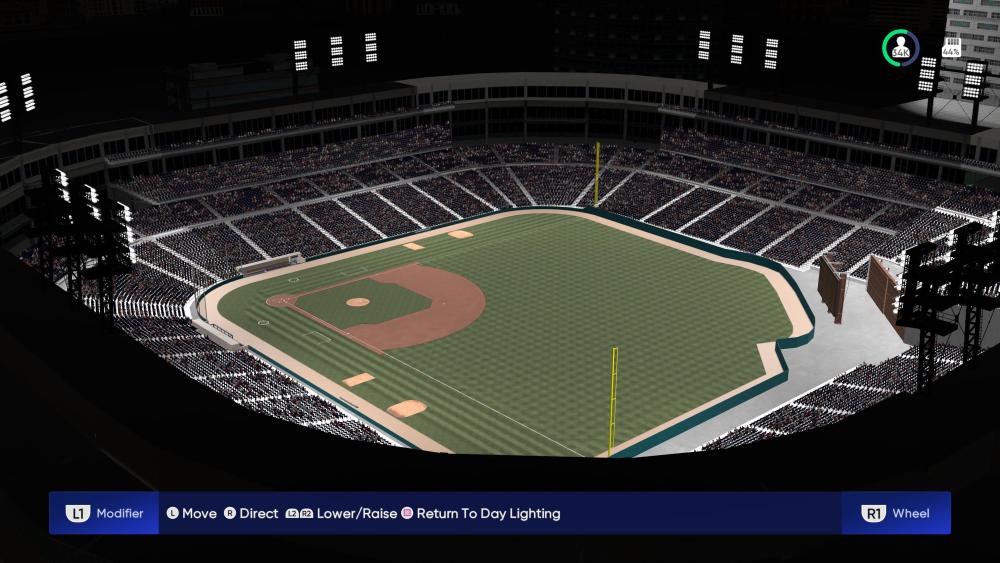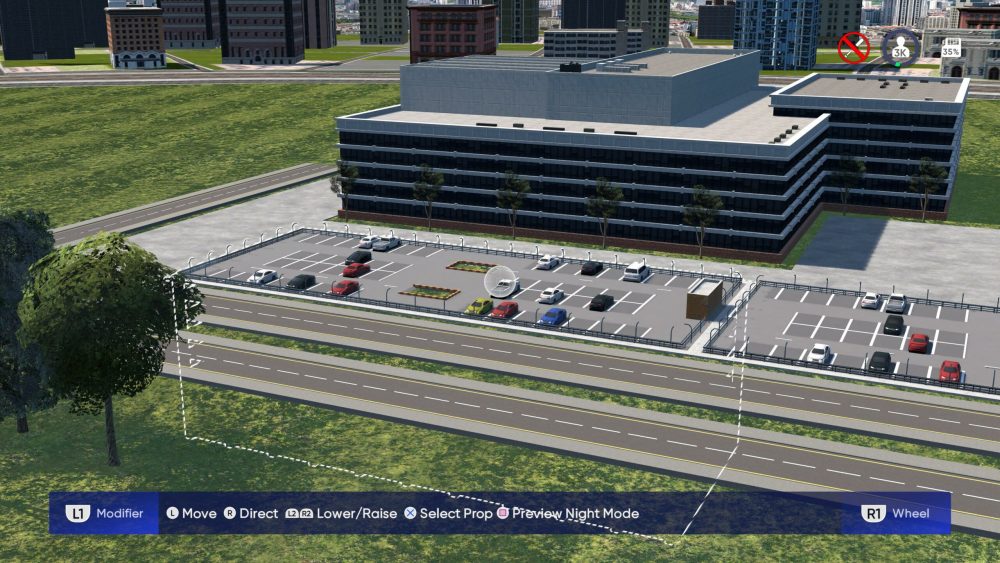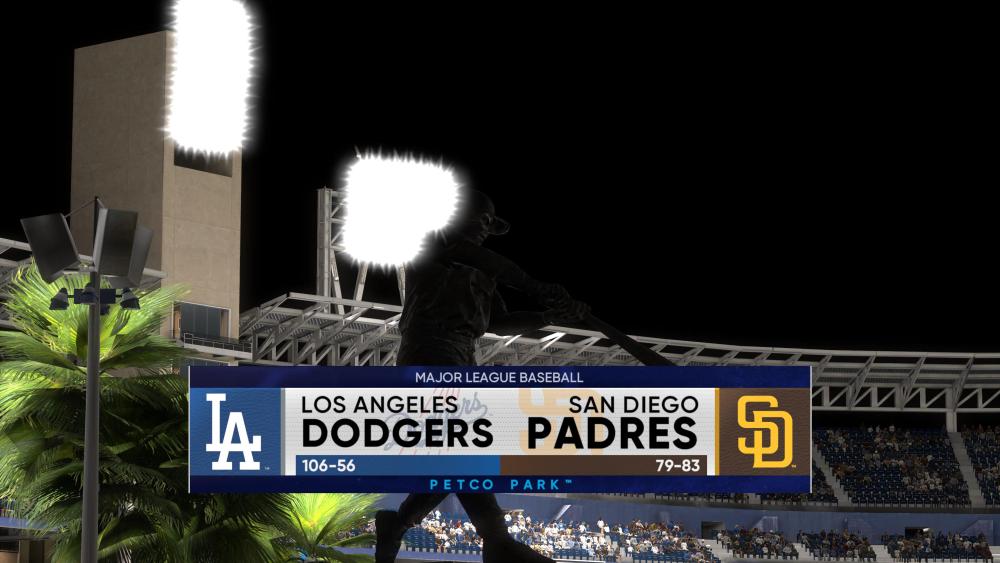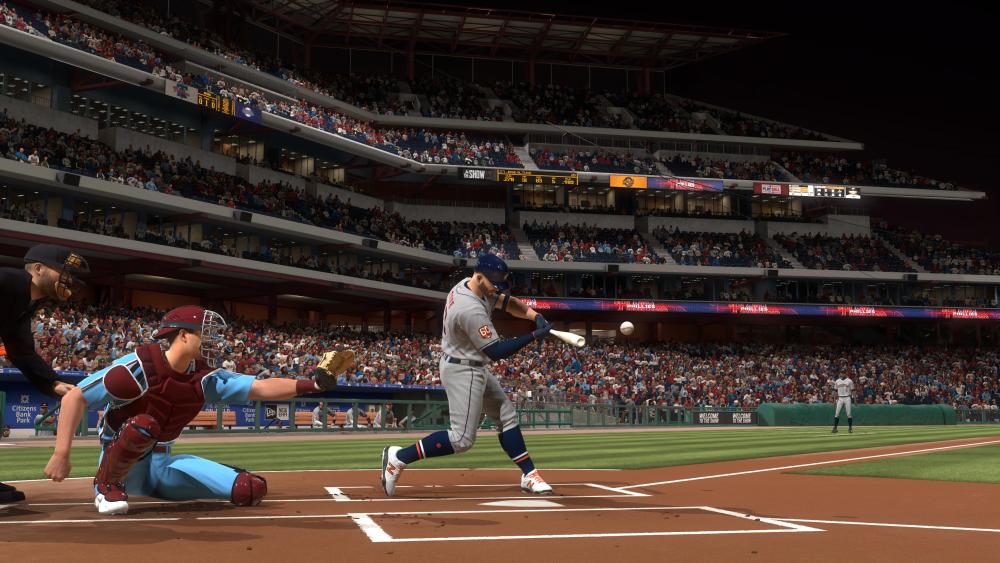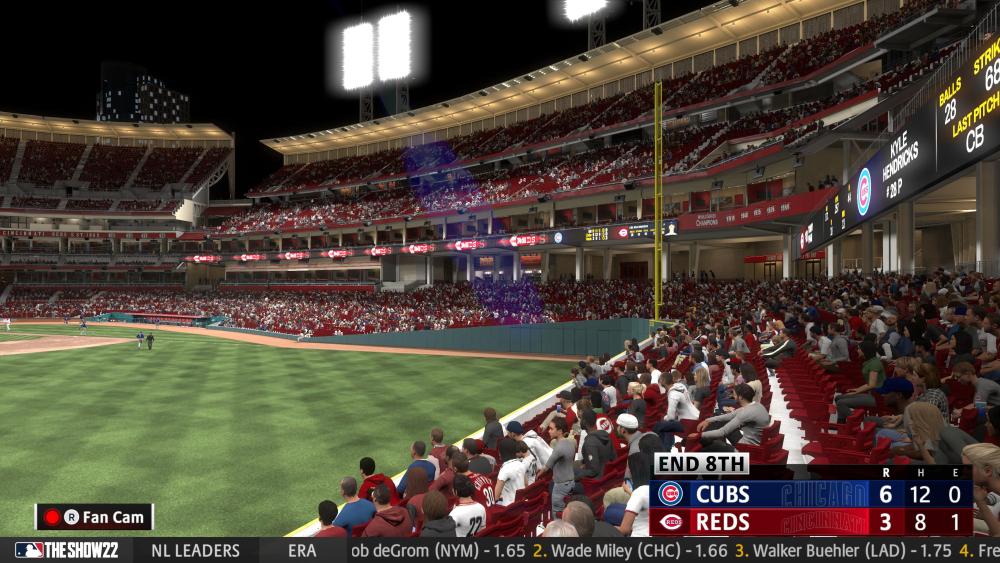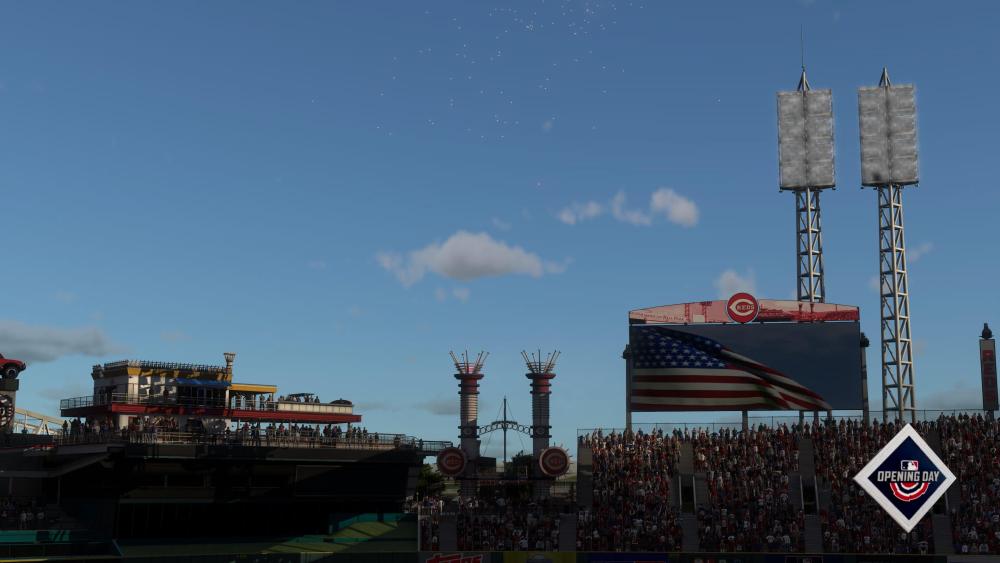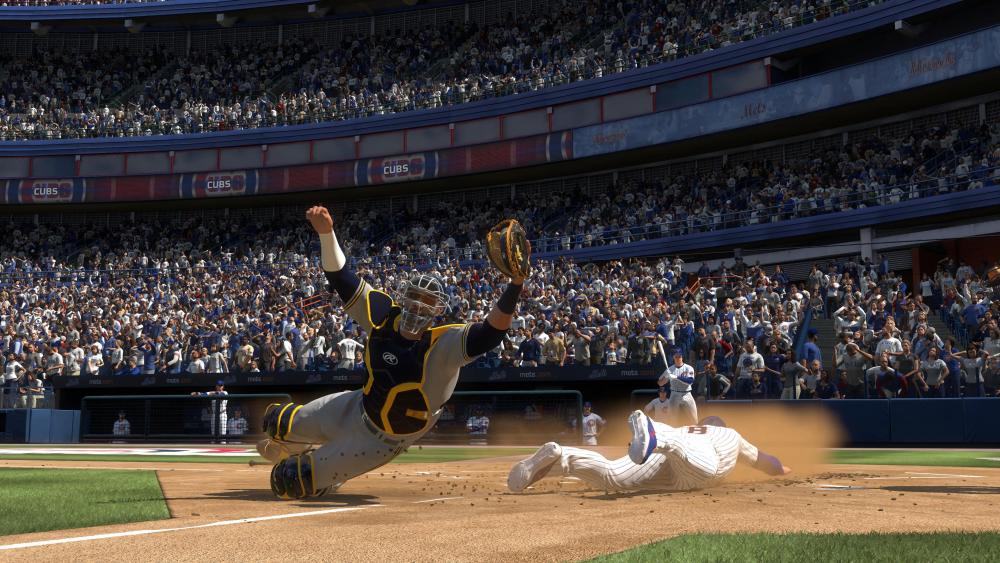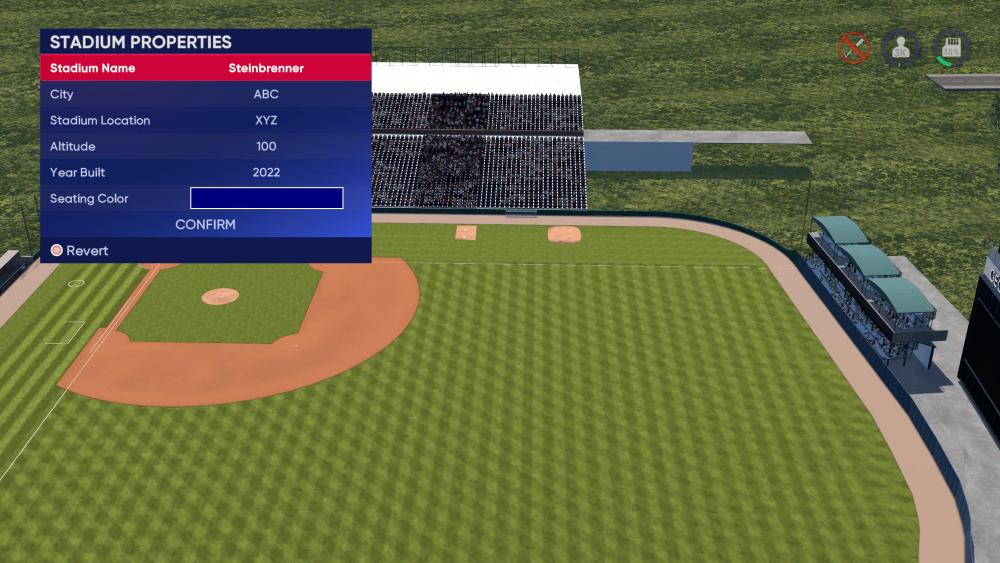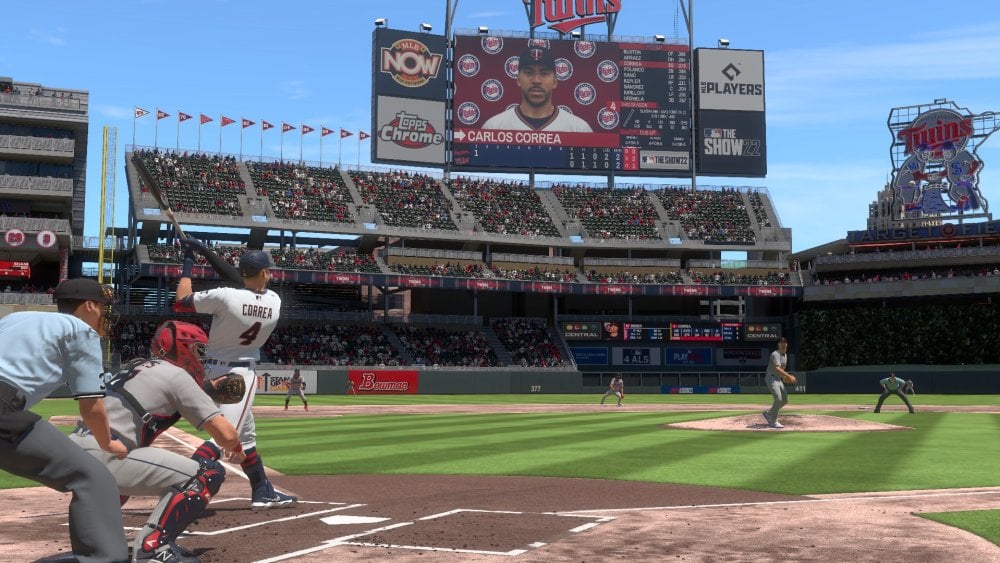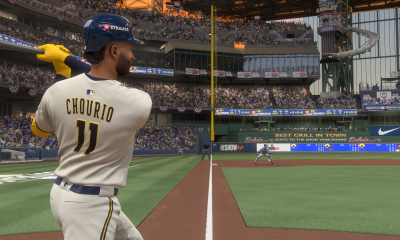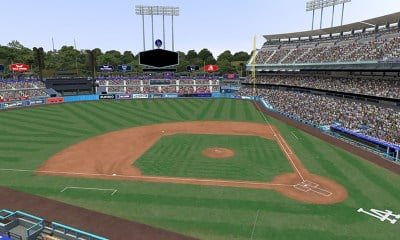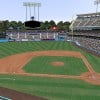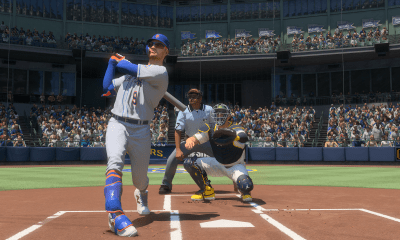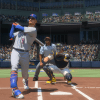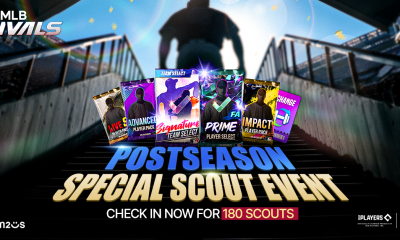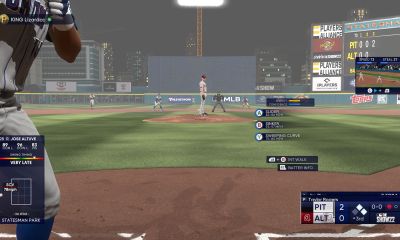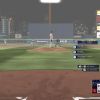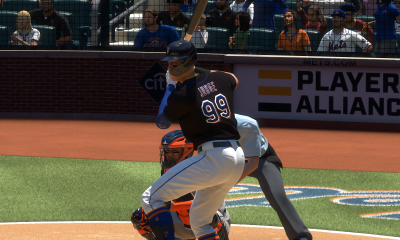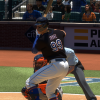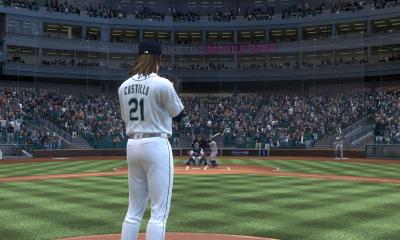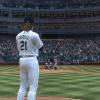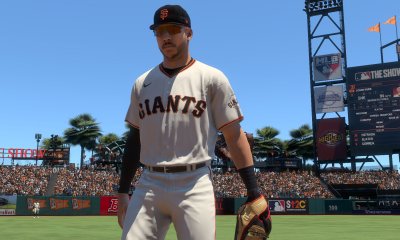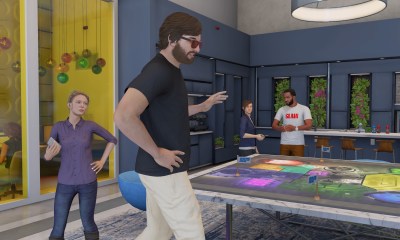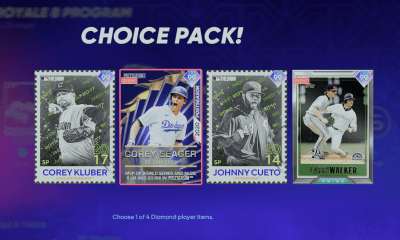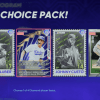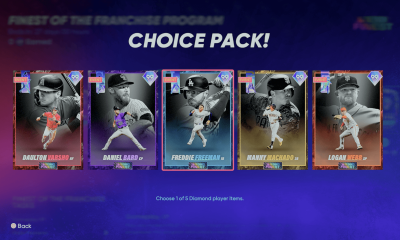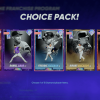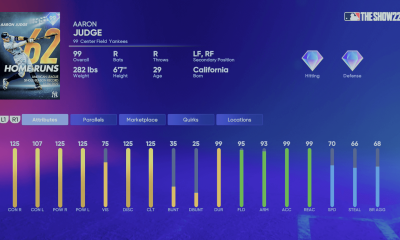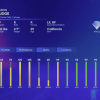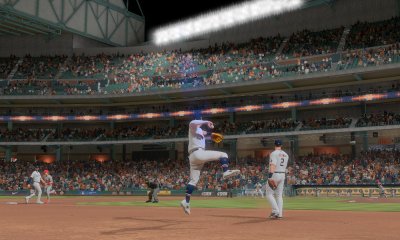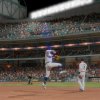MLB The Show 22
MLB The Show 22 Review - Building Blocks and Growing Pains
Coming off MLB The Show 21, it felt like a rare “prove it” year for SDS coming into MLB The Show 22. Between some tough franchise mode cuts, a revamped Road to the Show mode that turned away some fans, and some obvious aging in other areas during the transition to new-gen consoles, MLB The Show 21 was still good but not quite at the elite level the franchise has usually reached during its tenure. This brings us to my MLB The Show 22 review.
The start of baseball season is one of my favorite times of the year, so let’s chat about what’s good and bad about MLB The Show 22.
MLB The Show 22 Review
What I Like
Gameplay Improvements
As someone who has played every iteration of this series dating back to the days of 989 Sports, it is getting harder and harder to impress me on the field, but that’s precisely what has happened this year with MLB The Show 22. However, before anyone becomes too excited, I was a fan of how the game played between the chalk in ’21 also, and I don’t believe there is anything in ’22 that will blow you away if have not been a fan of the gameplay for whatever reason.
That said, I do understand some of the critiques last year, especially as it relates to elements of hitting like hit variety and check swing inconsistencies. On the pitching side of things, I do think it got too “easy” with Pinpoint at a certain point, and that has been tweaked as well here. In short, I found things here to be more refined, more natural, and more authentic.
From the way players attack a fly ball to the way errors play out, the fielding (which was already much improved last year) may have taken the biggest leap forward of any major aspect of gameplay. Adding perfect/perfect throws to more aspects of the fielding also adds another layer of skill and mystery to every relay play, which is great. The staleness of seeing the same animations seems to be a thing of the past as well. In general, there is a much more natural approach to attacking a fly ball, throwing the ball, and simple movements when reacting to the ball.
It’s not all about fielding in terms of improvements either. New elements can be seen in how the ball leaves the pitcher’s hand, the ball’s flight path through the air, and how it reacts when coming off the bat. However, I do believe we still could use much better pitcher “follow through” animations. Almost everyone throws hard these days, but the animation system needs to better showcase that exertion and power follow through to really sell some of these guys going up there and throwing gas.
In terms of hitting, I also want to mention the importance of check swings seemingly working much better this year. It seems SDS found a better way to sync up these check swings with the umpire appeals to make them align better from a visuals standpoint, and the outcomes overall just feel more “fair” this year. On the pitching front, the simple way to explain the improvements is to say Pinpoint just feels harder. It’s easier to get more walks, and for pitchers to lose the strike zone at times, which is good to see.
If you were looking for massive improvements in one specific area, MLB The Show 22 might leave you disappointed. But if you’re someone who usually loves the gameplay but felt it was a little below par last year, the collective enhancements across the board should bring most of those people back.
March To October
Whether or not M2O ends up replacing franchise mode in the future is yet to be known, but for now, M2O is really finding its groove. The appreciation for M2O falls into a couple of different categories. The first is that the mode gives casual baseball fans a quicker experience without dealing with the minutia of the sport and running a franchise. Secondly, if you’re like me and love running a franchise with your favorite team, this is an outlet where I can now enjoy other teams and still get a fulfilling experience.
M2O also gives you a chance to take control of specific players, even some of the highly rated prospects in your farm system, and expedite their path to the majors. Although the choice of who to set on the fast track to the big-league club isn’t always obvious, the game does give you an option to decline the choice if it is a player who doesn’t fit into the squad’s plans.
Not all is perfect in this accelerated mode, as some options are limited and linear, with a few making very little sense, such as trying to expedite my 28-year-old catcher with D potential quickly to the majors.
Another minor issue with M2O, which is subjective, was the inability to get into a consistent flow during the season with my squad. It takes time to get familiar with the strengths and weaknesses of each player, whether that be in the field or at the plate, and the quickness with which you progress through the season creates a feeling of unfamiliarity that I could never quite shake off in its entirety.
Nevertheless, it is nice how many more situations you get into at this point. Games will start in the late innings, there’s more player lock chances, and there’s just more variety game to game overall. Plus, there’s now an offseason with a more in-depth free agency to really have some fun going through. I have not played with that component of things as much as of yet, but I’m eager to see how it feels after more offseasons.
In the future, I would also like to see more customization options as far as rosters, logos, and stadium choices go. I am an admitted franchise snob and relish the opportunity to control every aspect of my squad throughout the year. Still, in playing M2O, I found plenty of enjoyment in unexpected ways. Even with some minor flaws that I discussed earlier, the experience was enjoyable and unique.
Stadium Creator
As someone who created over 100 real and fictional stadiums in MLB The Show 21, seeing what the new edition of the stadium creator had to offer was high on my priority list. Sadly, it wasn’t a lot at first glance, which I will get into later. If we take my disappointment in the lack of new options and push it aside for a bit, there are two substantial new additions to the creation tool that create an instantly better overall experience than the one found in The Show ’21.
The first is the highly requested feature that was supposed to be patched in with last year’s version but never was, and that is the ability to play night games in created stadiums of all types. The impact of having night games in created stadiums is substantial, and the fact that you control the lighting schematics of the ballpark is even better. In addition, this is not a generic lighting substitute that placates those of us longing for this option, but rather a contextual program that depends on your ability to create a proper lighting system based on the needs and design of your park.
After hours of testing and manipulating the system in multiple scenarios, I am incredibly pleased with the results. The lighting in a created stadium environment looks as good and natural as what is seen within a stadium or venue built by the developers.
The other more critical improvement to the system was a more extensive internal memory capacity system, which means more items can be added than in last year’s program. This may sound like a “nice-to-have,” but I would categorize it as a massive improvement. In my time with the new stadium creator, I found the ability to build out both stadiums and surrounding neighborhoods easier to accomplish, allowing me to create living cities and communities that correspond with the type of stadium I was building.
This is extremely important to me (and others), and the surroundings of a ballpark help create a high level of authenticity.
Not everything is perfect in the stadium creator, as some of the new navigation tools seem like an odd choice, and I will get into the lack of new additions down below (and one bug), but the additions of nighttime baseball and the ability to create more prominent, living neighborhoods are powerful enough to land the Stadium Creator on the list of things I like.
Presentation
Like with the stadium creator, I have some negatives here, but it’s still a major net positive overall. Out with the old and in with the new is the central theme for MLB The Show 22, especially as it relates to rebranding the presentation and the sounds in the booth. Matt Vasgersian is no longer the voice of the series, leaving after being attached to the franchise since 2006.
With Matt gone, the voices of Jon (Boog) Sciambi (ESPN, Chicago Cubs) and Chris Singleton (White Sox, Brewers, ESPN) now operate the booth in the form of the new play-by-play and color commentary team. With the new voices come new lines and new perspectives, and while it’s only the first year, I do think this duo is the right choice. I’ll get into some of the negatives in a bit, but the point is they sound right in the booth, and the issues I might have should be solvable in the long run.
To put it another way, their lines sound fluid, the information is usually pertinent and on point (when there’s no bugs), and they offer everything from over-the-top excitement to the mundane calling of a strike one. I think Boog especially is important here as the play-by-play announcer, and his inflection is just about perfect for a video game. Singleton is replacing a long line of, quite frankly, bad commentators that SDS has been rolling through, and he shines by simply not being them. He probably comes off as the “weaker” of the two here, but color commentary is trickier in these games due to wanting to avoid being overly memorable and repetitive without coming off as boring.
But we do need to talk about the bugs and repetitiveness. In my time with the game, there have been some instances of repetitiveness and simply calling the wrong sequences — from an incorrect number of outs to describing a team taking the lead on a walk-off instead of instant excitement. The repetitiveness shines through (as it did many times in the past) first and foremost with batter and pitcher intros. Saying X player could be in the Majors the next 10-15 years, and then calling out another young player an inning or two later and saying the same line is obvious and noticeable.
The same goes for repetitive lines when you pop out to first base, or even some of the cooler stuff like the stadium history stories. None of this stuff would be annoying on its own, but it seems SDS has no system in place to notice when a line has already been used and then stop it from playing for a couple games — or something like that.
Then there are also just some weird priority issues that play out at times. Bryce Harper should never be called “number 3” but I’ve heard that in the game. His name is in the game as well, but why would you not use that every time? Either way, these feel like technical hiccups that can be corrected more than foundational issues. Boog and Singleton are good talents for the booth, so now SDS just has to bring the best out of them moving forward and also perhaps update their commentary system to be a bit smarter.
The commentary also comes off well at times simply by being part of a much improved audio mix overall. The pauses and silence that make up a regular baseball broadcast are here (and that’s great!). Boog and Singleton don’t talk nonstop, and instead they just fit into this new soundscape that is full of improvements. The glove sounds of different pitches, the crack of the bat, the varying sounds at different stadiums, the way the runner’s foot hits first base, and the crowd swells and reactions are very much improved this year. I’m not sure if everyone will notice it all, but if you have been playing The Show for many years, it’s hard to miss a lot of the improvements. I do hope we start to get more individual fans we can hear as an added layer of sweetening, but this area of the game went way up this year.
On the visual side of things, players now have the option to choose a couple of national broadcast packages when playing a game, or the newly included regional broadcast choice, which mimics regional networks like NESN, Marquee, YES, and a few others. The presentation upgrades also include new camera angles, new camera types, transition and wipe screens, and updated team graphics.
I don’t have as much to say on the visuals, but the point I want to make is the changes are noticeable here as well. SDS is going in the right direction with the presentation, and now I just hope the developers continue to deliver rather than easing up now that they’re making strides.
What I Don’t Like
Lack Of Franchise Improvements
As I mentioned earlier, my love and passion for franchise mode is what drives me to MLB The Show. That said, the feeling many of us have is that franchise mode has been abandoned (for the most part) at this juncture. Regardless of the reasons — whether that be because March to October and franchise mode might one day fuse into one or because it’s hard to rapidly add changes due to coding issues — the fact is that franchise mode within the MLB The Show series has grown stale and predictable.
That’s not to say there is not a high level of fun that can be had here either, but there are still plenty of additions that can be implemented into franchise mode to raise the level of authenticity and enjoyment. At this stage, I would love to see the ability to customize leagues and divisions, editable draft classes and bench coaches, deeper spring training options, and the ability to create and use custom or retro-style broadcast packages for historic rosters.
These additions are just a few that I hope someday make their way into franchise mode within the MLB The Show series. In a general sense, while the new additions in the mode are noted, it’s just not enough right now.
Stadium Creator
While I like Stadium Creator, there is plenty of room for disappointment when it comes to this year‘s version. There are very few new additions to the items to help build out your stadium creation. Many creators were hoping for additional props such as different seating arrangements, different fence configurations, new stadium props to add throughout the stadium, and the ability to import created logos and adhere those logos on fence walls to create a more authentic-looking venue.
While the lack of new additions and new props to place within your creation and around your creation is a disappointment, this year’s stadium creator still does not allow you to create a retractable roof stadium or a dome stadium. On top of that, there are a couple weird bugs affecting some users that go in a couple different directions. The scariest bug within this group is that you can create a stadium and then when you load that stadium, it’s not actually the one you created. It’s hard to figure out what’s causing this or how widespread it is right now, but be sure to save backups of your stadiums as you create them right now.
Bottom Line
MLB The Show 22 is the best looking and sounding baseball game I’ve ever played. There are still improvements that I want to see in the future, as many of us do, but that doesn’t mean I can’t separate what I hope to see in the future from what is so good about this year’s game. At the end of the day, MLB The Show 22 is a damn good baseball game.


